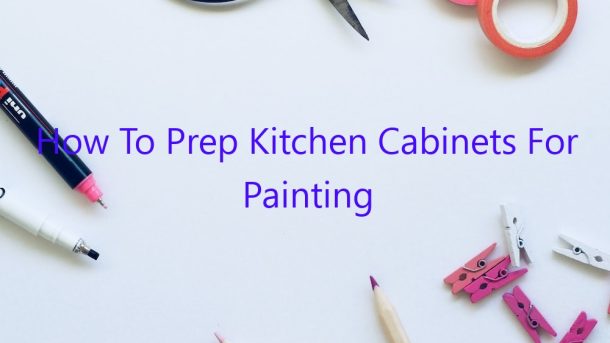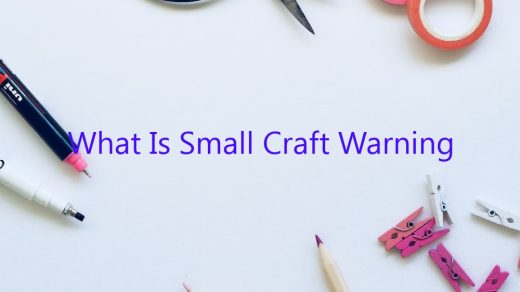Prepping your kitchen cabinets for painting is essential to achieving a professional-looking finish. Follow these steps to make sure your cabinets are ready for paint:
1. Remove all hardware from the cabinets.
2. Clean the cabinets thoroughly with a degreaser.
3. Sand the surfaces of the cabinets lightly to create a smooth surface for paint to adhere to.
4. Prime the cabinets with a primer specifically designed for cabinets.
5. Paint the cabinets with a top coat of paint.
If you’re not comfortable doing the prep work yourself, you can always hire a professional to do it for you.
Contents
Do I need to sand cabinets before painting?
When it comes to painting cabinets, there are a few things you need to keep in mind. One of the most important things is whether or not you need to sand the cabinets before painting.
In most cases, sanding is not necessary. However, if the cabinets are very dirty or if there is a lot of built-up grease or grime, then sanding may be necessary in order to get a good paint job.
Another thing to keep in mind is the type of paint you are using. If you are using a primer, then sanding may be necessary in order to get a good adhesion.
Overall, if you are unsure whether or not you need to sand the cabinets, it is best to err on the side of caution and sand them before painting. This will help ensure that you get a good, lasting paint job.”
What to use to clean kitchen cabinets before painting?
One of the most important steps in painting your kitchen cabinets is to clean them thoroughly before you start. This will remove all of the dirt, grease, and dust that has built up over time and will help the paint to stick better.
There are a few different methods that you can use to clean your kitchen cabinets before painting them. The one you choose will depend on the condition of your cabinets and the type of paint you are using.
If your cabinets are in good condition and you are using a latex paint, then a simple cleaning with a wet cloth should be sufficient. However, if your cabinets are dirty or damaged, you will need to use a stronger cleaner.
One popular cleaner for kitchen cabinets is TSP, or trisodium phosphate. TSP is a harsh cleaner that can strip away the finish on your cabinets, so it should be used with caution. It is important to test it on a small area of your cabinets first to make sure it will not damage the finish.
If you are not comfortable using a harsh cleaner like TSP, then a mild detergent or soap can also be used to clean your cabinets. Be sure to rinse the cabinets thoroughly after cleaning to remove all of the soap or detergent.
Once your cabinets are clean, it is time to start painting them. Be sure to follow all of the instructions on the paint can to ensure the best results.
Can you paint straight over kitchen cabinets?
If you’re looking to give your kitchen a quick and easy makeover, painting your kitchen cabinets might be just the solution you’re looking for. But can you paint straight over kitchen cabinets without any prep work?
The short answer is yes, you can paint over kitchen cabinets without any prep work, but the long answer is a little more complicated. If your cabinets are in good condition and are free of any peeling paint or other damage, you can probably get away with just a light sanding to give the paint something to grip onto.
If your cabinets are in bad condition or are covered in peeling paint, you’ll need to do a little more prep work before you can start painting. You’ll need to strip the old paint off the cabinets, and then you’ll need to sand and prime them before you can start painting.
If you’re not sure whether your cabinets are in good condition or not, it’s best to err on the side of caution and do a little prep work before you start painting. It might take a little bit longer, but it’s worth it if you want your cabinets to look their best.
Do you have to prime kitchen cabinets before painting?
Do you have to prime kitchen cabinets before painting?
In most cases, you do not have to prime kitchen cabinets before painting them. However, priming kitchen cabinets is a good idea if you are painting them a light color over a dark color, or if you are using a high-gloss paint. Priming the cabinets will help the paint to adhere better and will help to prevent the formation of any unwanted blemishes.
If you are priming your kitchen cabinets, be sure to use a quality primer that will be able to cover the existing paint. You should also be sure to follow the manufacturer’s instructions for priming, as different primers may require different application methods.
Once the cabinets are primed, you can then begin painting them using your chosen paint color. Be sure to use the same paint type (latex or oil) that was used for the primer.
If you are not sure whether or not you should prime your kitchen cabinets, it is best to consult with a professional painter. They will be able to advise you on the best course of action and will be able to help you achieve the best results possible.
What is the fastest way to sand cabinets?
Cabinets are a staple in many homes, and they can be a focal point in a room if they are well-made and well-sanded. When it comes to sanding cabinets, there are a few ways to do it quickly and efficiently.
The best way to sand cabinets is to use an orbital sander. An orbital sander is a tool that is used to sand wood or metal surfaces. It has a round sanding pad that moves in small circles. This type of sander is perfect for sanding cabinets because it is easy to use and it makes quick work of the sanding process.
Another way to sand cabinets quickly is to use a belt sander. A belt sander is a tool that has a sanding belt that moves back and forth. It is perfect for sanding large surfaces. However, it can be difficult to use on smaller surfaces.
Finally, you can sand cabinets by hand. This is the slowest way to sand cabinets, but it is a method that can be used if you do not have access to an orbital or belt sander.
When sanding cabinets, it is important to use the correct type of sandpaper. Sandpaper is available in a variety of different grits, and the grit size refers to the number of sanding particles per inch. The higher the grit number, the finer the sandpaper.
When sanding cabinets, it is best to start with a coarse grit sandpaper and then work your way up to a finer grit sandpaper. This will ensure that the cabinets are sanded evenly and that all of the rough spots are removed.
It is also important to sand in the direction of the wood grain. Sanding in the wrong direction can cause the wood to splinter and chip.
If you are looking for a quick and easy way to sand your cabinets, using an orbital sander is the best option. Be sure to start with a coarse grit sandpaper and then work your way up to a finer grit sandpaper to achieve the best results.
What happens if I don’t sand before painting?
If you’re planning on painting a surface, it’s important to sand it down first to create a smooth surface. Failing to do so can lead to a number of problems, such as a surface that’s not smooth, paint that chips or peels off, and a longer painting process.
One of the most important reasons to sand before painting is to create a smooth surface. If you don’t, the paint will not go on evenly and you’ll likely have to apply multiple coats. This can lead to a longer painting process and a less than perfect finished product.
Another issue that can occur if you don’t sand is that the paint can chip or peel off. This is often the result of a surface that’s not smooth, as the paint will not adhere as well to rough surfaces. In addition, if there are any bumps or protrusions on the surface, the paint will likely chip or peel off in these areas.
Finally, if you don’t sand before painting, you may end up having to do more sanding later on. This is because the paint will not cover the surface evenly, which means that any imperfections will be visible. If these imperfections are not addressed, they will likely show through the paint, resulting in a less than perfect finish.
Can I use vinegar to clean cabinets before painting?
Many people are curious if they can use vinegar to clean cabinets before painting them. The answer is yes, you can use vinegar to clean your cabinets before painting them, but there are a few things you should keep in mind.
First of all, vinegar is a great cleaning agent because it’s a natural disinfectant. It can kill bacteria and help to remove any dirt or grime from your cabinets. However, vinegar can also be a bit harsh, so you should avoid using it if your cabinets are made from a delicate material like wood.
If your cabinets are made from a more durable material like laminate or plastic, you can safely use vinegar to clean them. Just mix a tablespoon of vinegar with a quart of warm water, and use a soft cloth to wipe down your cabinets. Be sure to rinse them with clean water afterwards to remove any residue.
If you’re painting your cabinets a new color, it’s a good idea to clean them with vinegar first. This will help to remove any grease or dirt that might be on the surface, and it will also give the paint a better surface to stick to.
Just be sure to allow your cabinets to dry completely before painting them. If you paint them while they’re still wet, the paint may not adhere properly.
Overall, vinegar is a great cleaner for cabinets, but it’s important to use it sparingly and to test it on a small area first to make sure it doesn’t damage the surface.




